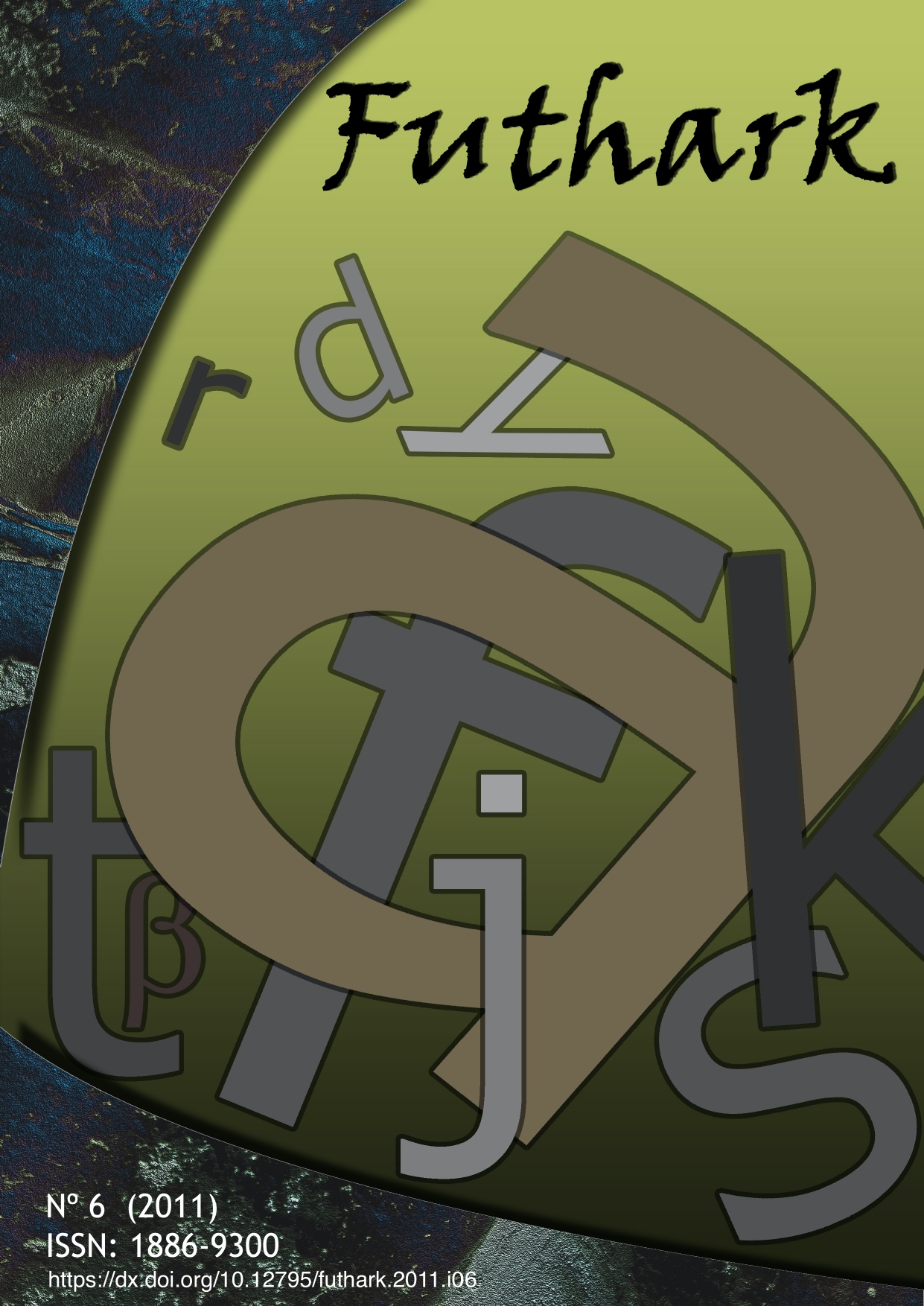La obra poética de Marie de Romieu
¿Traducción o imitación?
DOI:
https://doi.org/10.12795/futhark.2011.i06.01Palavras-chave:
Palabras Clave : Traducción e intertextualidad, Adaptación, ImitaciónResumo
Abstract: The poetic work of Marie Romieu proves such an intricate maze of intertextual relations, that we are bound to find in her poems the traces left by her many readings of Classical, Italian and medieval French texts in addition to those of some contemporary authors. This sort of polyphony meets the poetess’ attempt to rescue those texts from the readers’ memory so that they can still linger throughout the ages to come.
By the use of a comparative analysis of several stanzas translated by Marie Romieu and her corresponding original texts we may draw the conclusion that Marie Romieu tries to imitate rather than translate them, and alongside with J. du Bellay she considers translation as a kind of re-writing process, that is, a creative act wherefrom a new poetic work originates different from the source text where the ‘I’ of the translator has replaced that of the author with the purposeof adapting the work of a new cultural reality, in this case the French Renaissance.
Key Words:Translation and intertextuality, Adaptation, Imitation
Resumen : La obra poética de Marie de Romieu se pierde en un intrincado laberinto de relaciones intertextueales quenos permiten reconocer en sus poemas la huella dejada por las lecturas de textos clásicos, de la literatura italiana, dela literatura medieval así como de buena parte de autores contemporáneos a la autora. Esta polifonía responde al deseo de la poetisa de recuperar estos textos de la memoria del lector y salvaguardarlos del paso del tiempo. Gracias al análisis comparativo de una serie de estrofas de poemas traducidos por Marie de Romieu y losl textos originales, llegamos a la conclusión de que Marie de Romieu más que traducir imita y que la traducción es para ella, al igual que para su coétaneo, Joachim Du Bellay una reescritura, un acto de creación que produce una nueva obra,completamente diferente de la original y
10
en la que el « yo » del traductor ha usurpado al « yo » del autor para finalmente adaptar su obra a una nueva realidad que no es otra que la del Renacimiento francés.
Downloads

Publicado
Como Citar
Edição
Secção
Licença
Direitos de Autor (c) 2011 Manuela

Este trabalho encontra-se publicado com a Licença Internacional Creative Commons Atribuição-NãoComercial-CompartilhaIgual 4.0.



